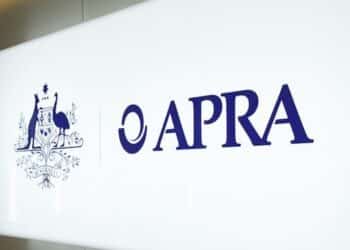The issue of large listed entities wiping their hands off responsibilities related to a subsidiary has become a major sticking point for advisers, with the establishment of the Compensation Scheme of Last Resort (CSLR) seeing the profession picking up the tab.
While E&P Financial Group made the decision to put its subsidiary Dixon Advisory into administration on 19 January 2022, which was about a year and a half before the CSLR was legislated, it has still managed to avoid any serious repercussions.
Despite client losses projected at $458 million, E&P has only had to pay $4 million following the settlement of a class action in April.
The settlement, as originally announced in November 2023, was for $16 million, however, E&P said the “balance of the settlement amount is comprised of remaining available insurance proceeds”.
In its submission to the Senate’s inquiry into the collapse of Dixon Advisory, the Financial Advice Association Australia (FAAA) warned that this ability to avoid paying client compensation provides an “attractive” way out.
“It was evident that ASIC’s action and focus on financial advice files meant that these complaints would end up as ‘financial advice’ External Dispute Resolution (EDR) claims if Dixon Advisory remained a member of AFCA,” the FAAA said.
“In this case, it was clear that ASIC and AFCA were focusing their attentions on financial advice issues. This provided an attractive ‘way out’ for E&P to avoid payment of client compensation.
“The fact that E&P Financial Group simply put its subsidiary Dixon Advisory into administration in full knowledge of the consequence for clients and the rest of the financial advice profession, and in the context of the expected establishment of the CSLR, is very concerning.”
Even more galling for advisers is that a large number of both Dixon advisers and clients moved across to a different E&P Australian Financial Services licensee – ASIC detailed that about 3,280 of the 4,100 Dixon clients had moved to E&P, along with as many as 39 advisers.
“According to the administrator, this was all done at no cost to Evans & Partners and at no benefit to the creditors of Dixon Advisory,” FAAA general manager of policy, advocacy and standards Phil Anderson said in August.
“Further, ASIC has taken action against a director of Dixon Advisory for allegedly changing the constitution of Dixon Advisory and executing a deed of acknowledgement of debt just prior to going into administration, seemingly for the reason of avoiding the repayment of a $19 million debt owed to Dixon Advisory by E&P Operations.”
This case was dismissed in November, with Justice O’Callaghan ordering that ASIC pay Paul Ryan’s costs.
How can advisers avoid covering these costs?
In order to ensure that these large listed entities, like E&P Financial Group, are not able to simply walk away, the FAAA has recommended the introduction of legislation that would enable a special CSLR cost to be levied against an integrated financial group that has made a subsidiary entity bankrupt to avoid paying compensation to consumers.
“It is deeply unjust that advisers are being asked to fund compensation for the clients of a large listed entity, like E&P Financial Group, that continues to operate and in fact has retained many of the clients under advice and their associated fees. This equates to allowing phoenixing activity to occur to the detriment of consumers,” the FAAA said.
“While insolvency law might be hard to change, the government has almost unlimited power to expropriate and has used that power already for the CSLR, against the 10 largest financial institutions.
“The government could establish a principle in the legislation based on common ownership and/or directorships, that a given proportion of revenue be levied against the parent entity if any subsidiary company has caused its customers to have recourse to the CSLR.”
According to the FAAA, this would provide a “tangible disincentive to future phoenixing activity”, adding that there is no legal reason the government could not use this power in relation to E&P.
“The CSLR Levy legislation should be amended to allow a penalty of some form to be applied against the parent entity of a subsidiary that is placed into administration,” the submission said.
“This penalty should be attributed against the total levy payable for the relevant sector. This penalty should not be paid into consolidated revenue.”
The submission also argued that the government needs to fulfil its original promise of covering the full first year of the CSLR.
“The government is only paying for three months of the scheme’s operations, including only one Dixon Advisory claim,” the FAAA said.
“Its contribution to supporting consumers has only been $4.8 million in the context of a scheme that has been launched with retrospective impact of what could be over $400 million.
“This is a broken promise by the government, which is in fact contributing very little to helping consumers who have lost money.”




I thought there was already a law in place that made it illegal for entities to implement arrangements that are deliberately designed to defeat creditors?
Let’s clarify one critical point: DASS clients have not “lost” $458 million. This figure is derived from an AFCA “but for” calculation, which simply means that clients would have been $458 million richer had the advice been different. It’s an opportunity loss calculation, not a measure of actual capital loss.
Forcing the advice profession to subsidize “opportunity cost” through the CSLR is a distortion of the scheme’s intent. The CSLR was designed as a last resort for clients. This should have meant those that have suffered actual capital losses, not theoretical missed opportunities.
This entire situation epitomizes the ridiculous, layered with the absurd, and delivered in a package of immorality. It’s high time we recalibrate the CSLR to reflect fairness and accountability.
AFCA is a huge moral hazard. It incentivises clients to invest in highly risky ventures, then go to AFCA if the investment fails, knowing AFCA will gift them an index fund return on their loss making investment.
If Dodgy Dixons and E&P’s ILLEGAL PHOENIX activity is and allowed to proceed as is and good Advisers get lumped with this obscene Compo Scheme, that is far from the last resort of Compo.
Then ASIC & the Government are sanctioning ILLEGAL PHOENIX activity
This CANNOT be allowed to happen.